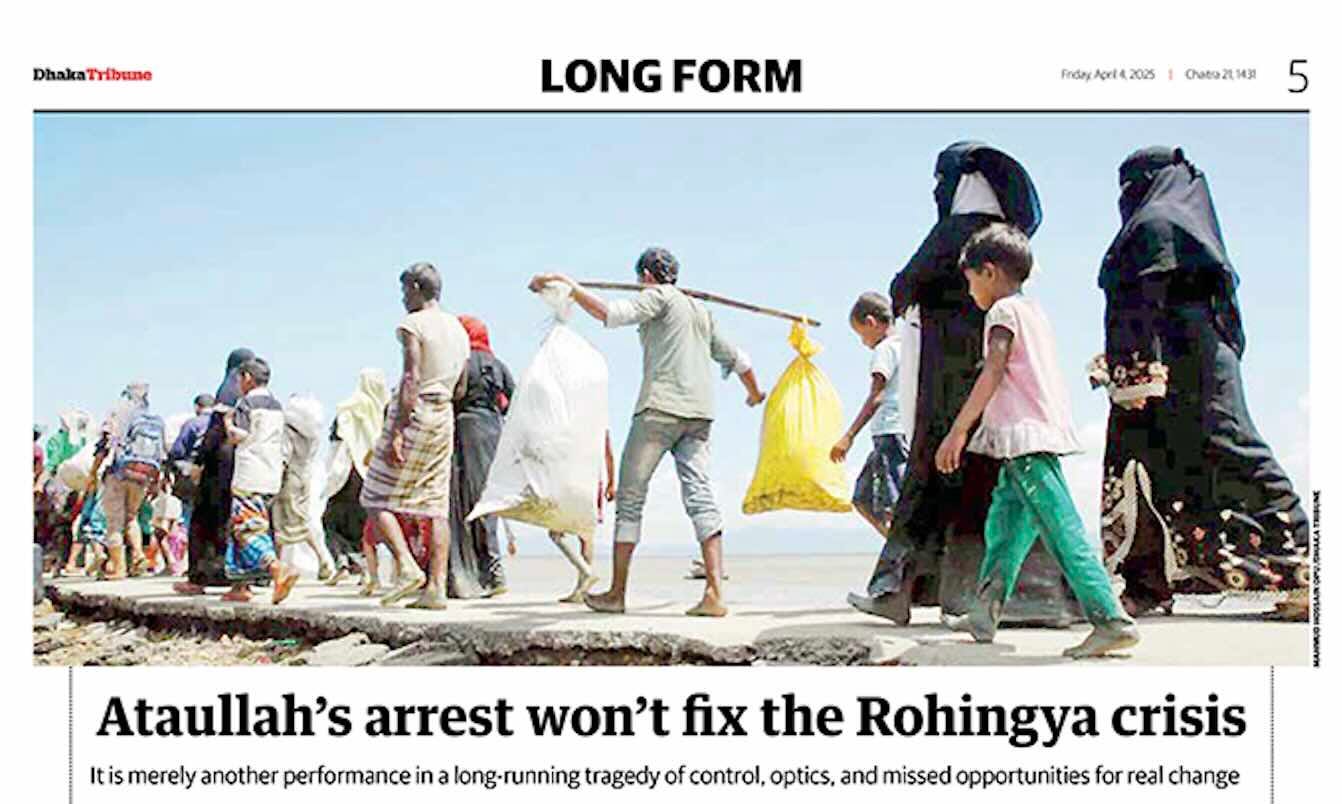Why Ataullah’s Arrest Changes Little for the Rohingya
ARSA’s Leader as a Political Prop
My latest op-ed in Dhaka Tribune argues that Ataullah Abu Ammar Jununi’s arrest was less about justice and more about performance and discusses how little has changed for the Rohingya.
For years, Bangladesh largely pretended not to know about ARSA’s (Arakan Rohingya Salvation Army) activities. Officials publicly denied the group’s presence even as it operated openly in the camps. This facade suited Bangladesh’s narrative that the Rohingya were a security threat - justifying fences, surveillance, and heavy policing. When it became useful to shift blame or flex power, the state selectively “cracked down.” Ataullah’s arrest is the latest manoeuvre in a long-running playbook: stage-manage the crisis, rather than solve it.
The larger tragedy remains. Nearly a million people are confined to barbed-wire camps with no right to work, no future in sight, and no genuine integration policy. The arrest of a militant leader might generate headlines, but it won’t erase the underlying structures that perpetuate violence and dependency. Until Bangladesh moves from performative gestures to meaningful change - allowing work (..no apologies for repeating this), ensuring security rather than contributing to insecurity, and seriously investing in solutions - the Rohingya crisis will remain stuck in political theatre rather than progress towards resolution.
The circus of arrests and scapegoats will never address the state’s own complicity. And as long as those underlying conditions persist, figures like Ataullah will continue to rise, fall, and reappear.
I did a podcast with Himal Southasian’s Neyantara Narayan. I'm not sure I was fully lucid in my explanations—you be the judge! The episode is “The Exploitation and Exclusion of Rohingya in Bangladesh.” You can find it on Spotify, Apple, etc. Here is the YouTube Version.


Thank you. I find this very meaningful. I have been reading stories of Rohingya resiliency and suffering for awhile now. I remember reading what young people shared through Facebook trying to let people know about their genocide, I saw people rebuilding dwellings after massive fires, there were people trying to help as first responders, teachers, and people who have photography contests trying to use their talents. I read about a mother who walked all the way to the Bangladeshi refugee camp with her two children and died after she got them there. I saw a picture of a giant elephant puppet to teach the camp about elephants after some people died because their dwellings were on an elephant migratory path. Not long ago I saw pictures drawn of drones attacking people in Myanmar. I assume that is all people had was whatever verbal information someone could get out when there were no cell phones.